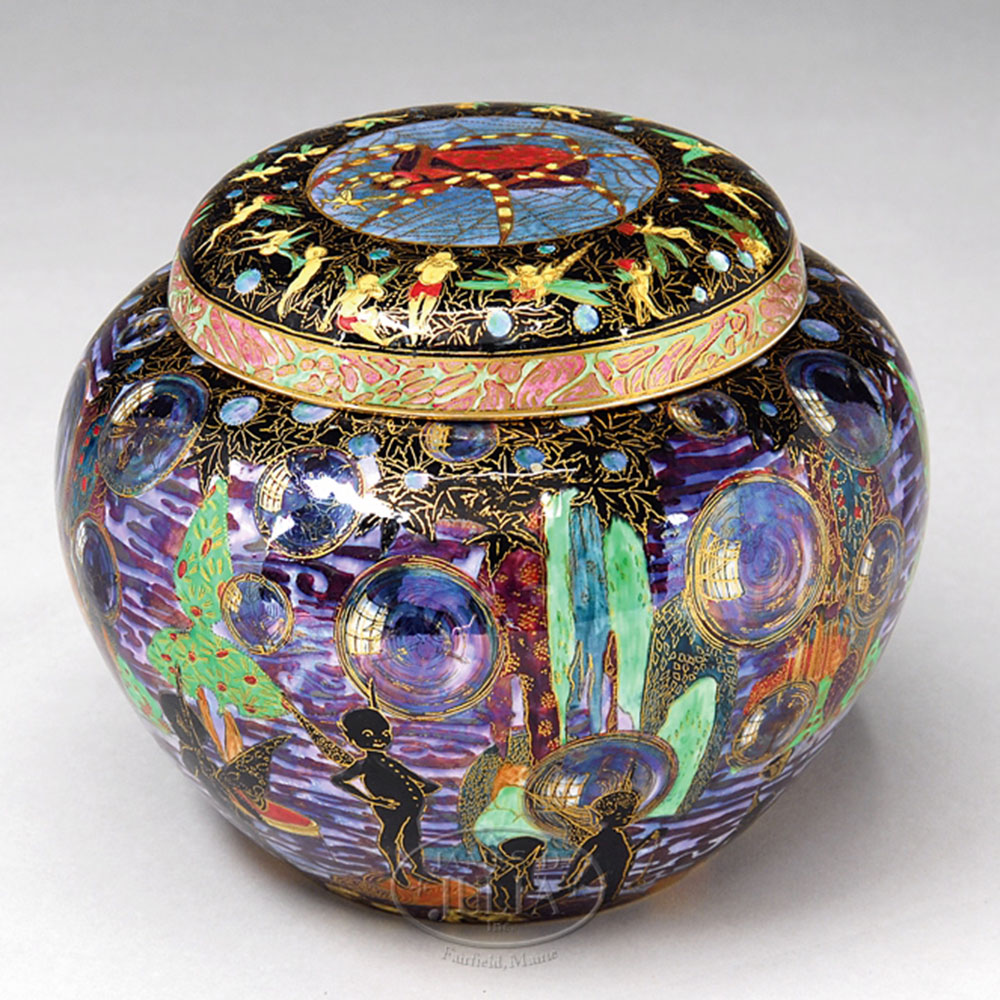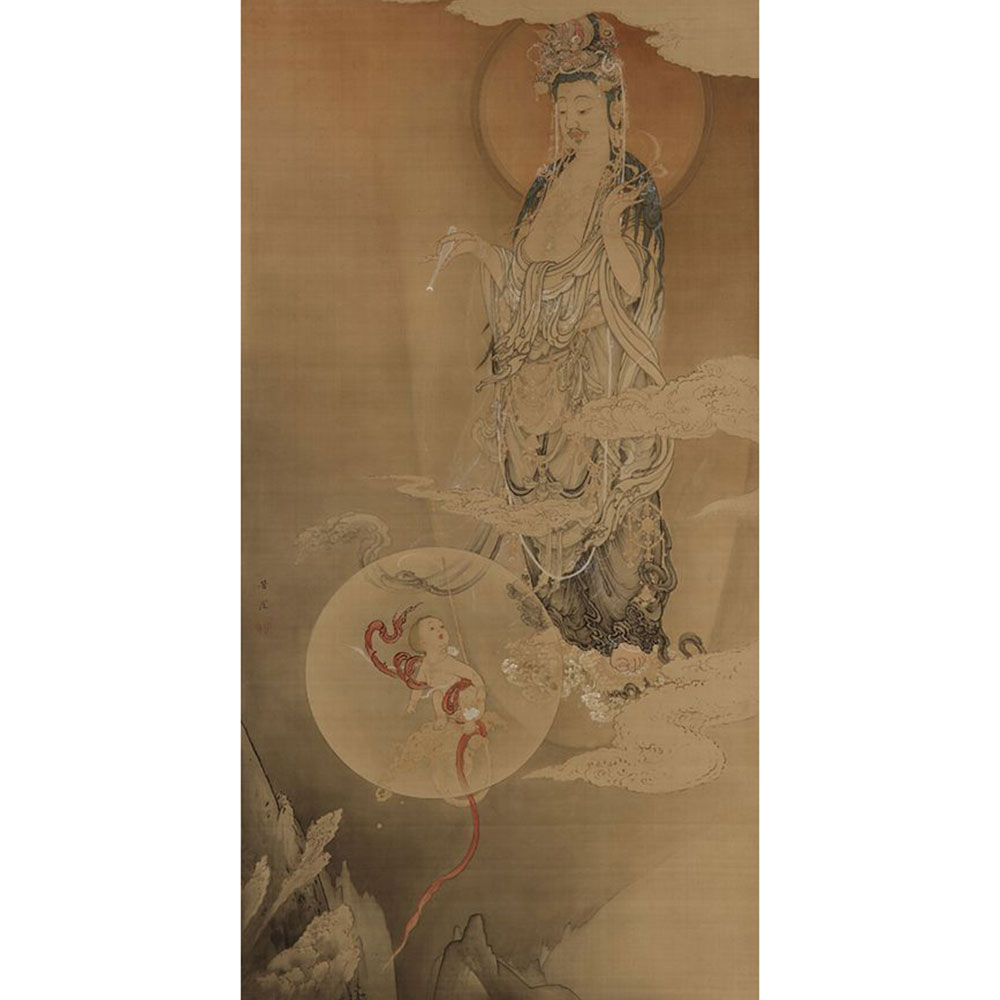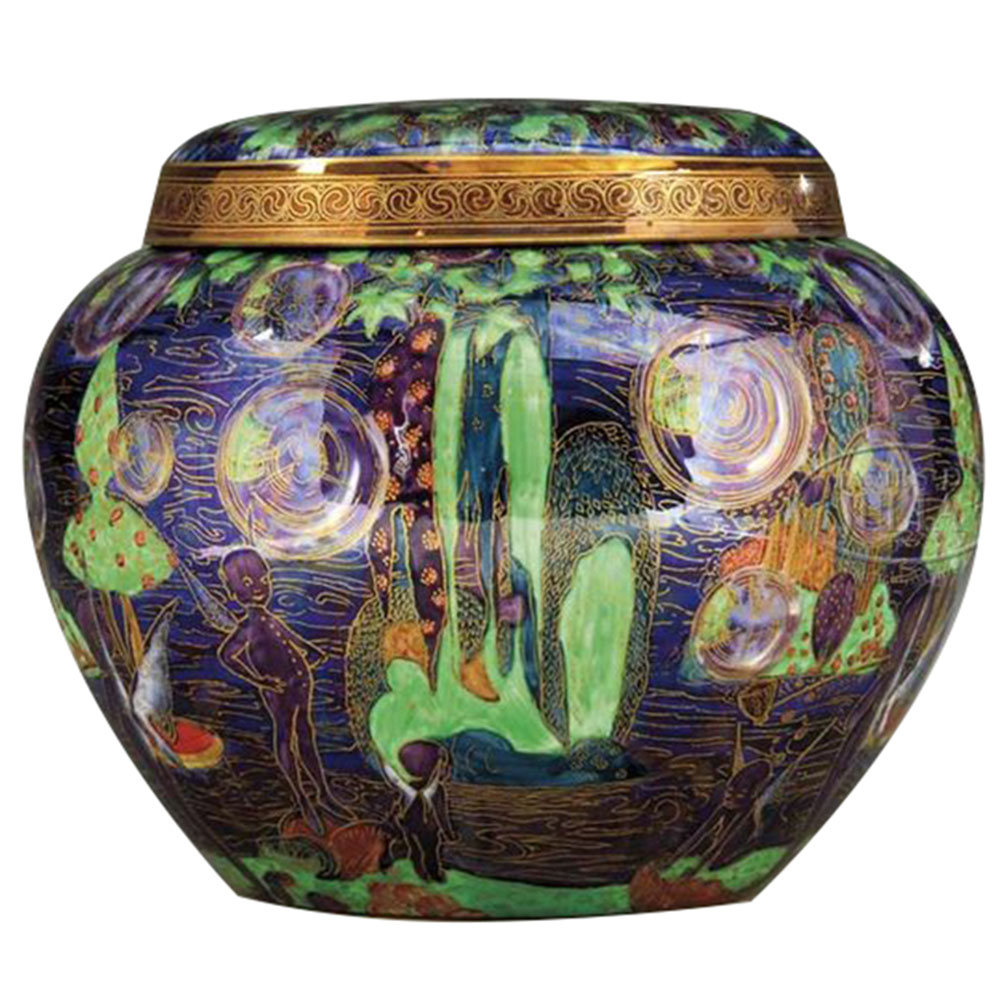
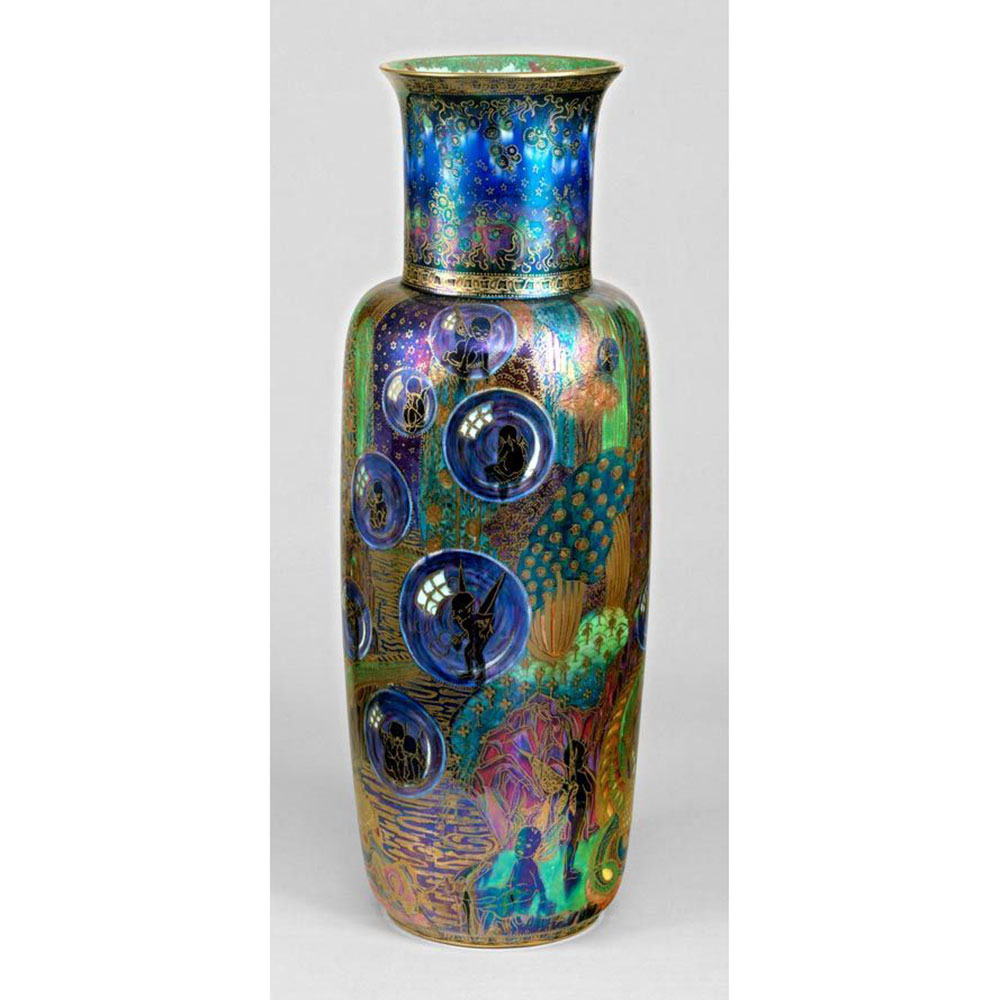
The Fairyland Lustre collection at WMODA is one of the most comprehensive in the world. Virtually every shape and pattern made by the Wedgwood factory during the 1920s is on display. Now, one of the sought after designs has joined the collection – a Malfrey pot with the Bubbles design.
Daisy Makeig-Jones developed the Fairyland Lustre designs in 1915 and they were hugely successful for Wedgwood’s luxury market until the Great Depression in the 1930s affected American sales and Daisy was fired. The production method was highly complex and expensive involving up to six firings of metallic compounds combined with oils and resins to achieve the glimmering iridescent lustre effects.
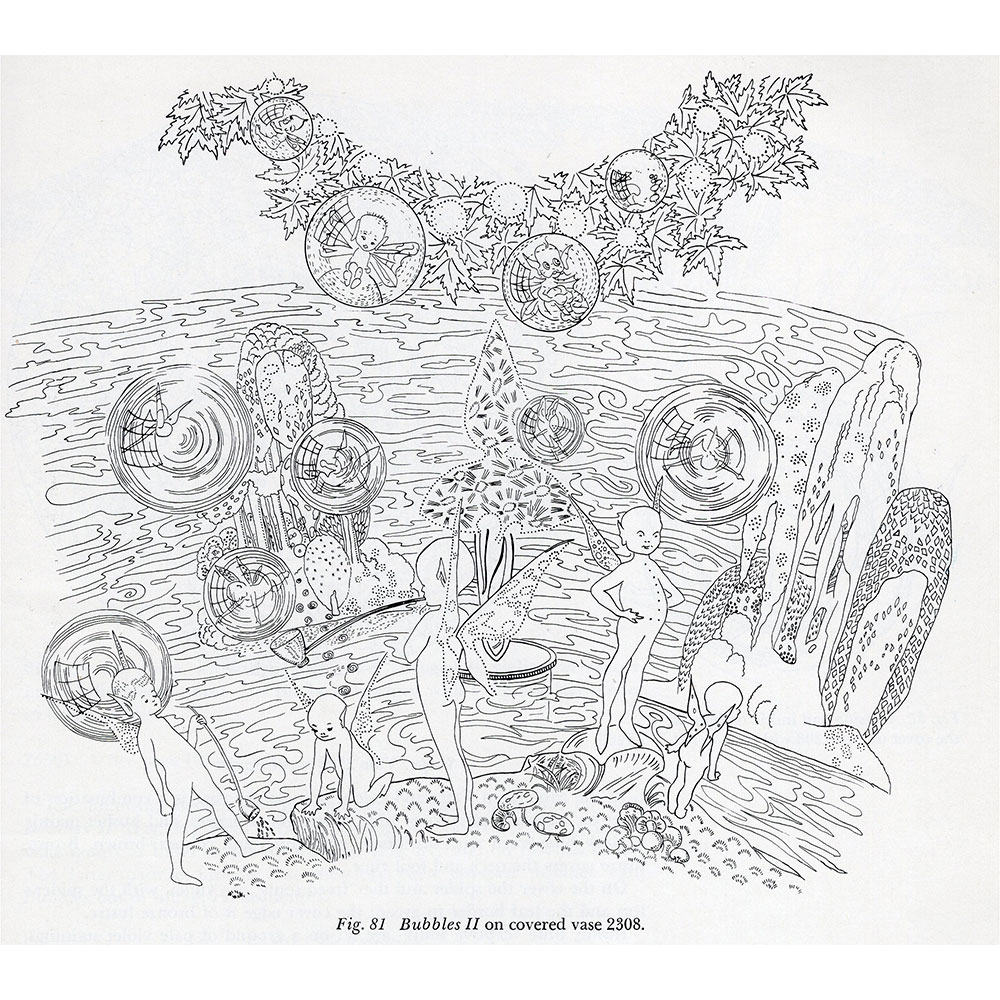
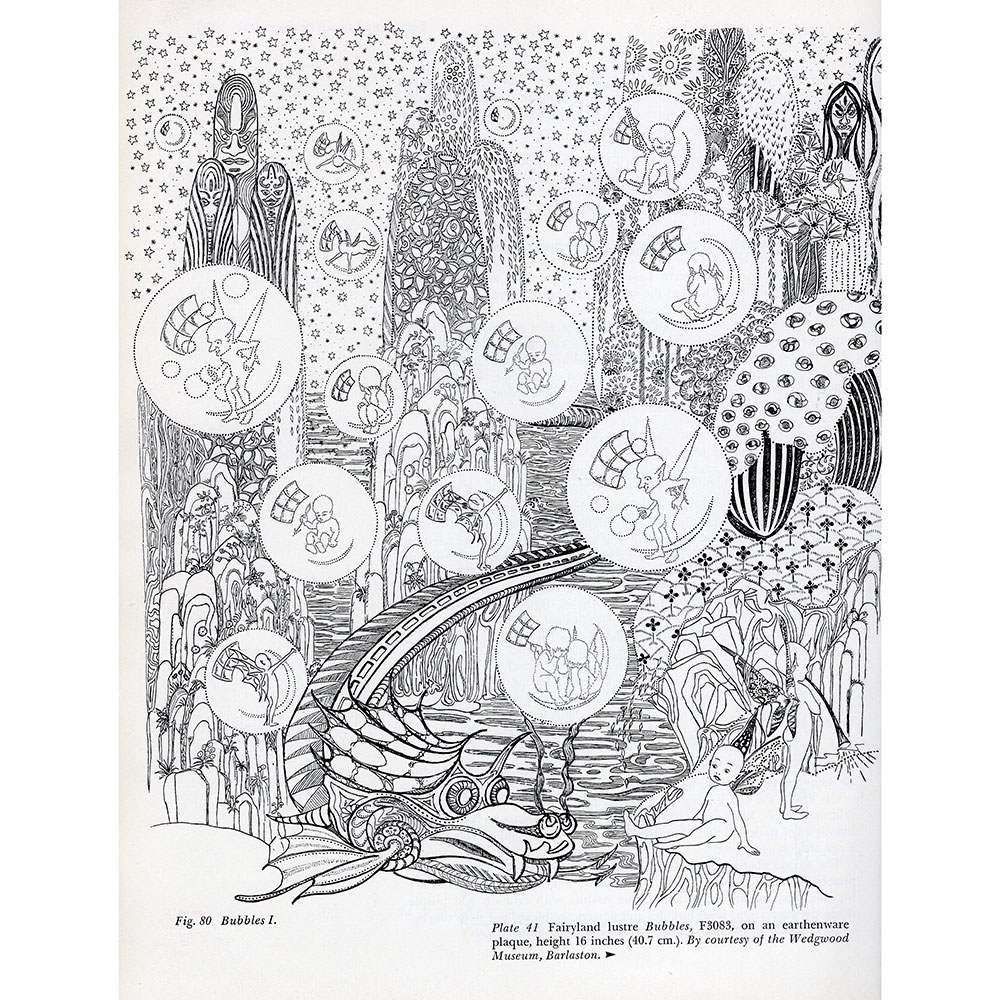
Daisy’s fairy folk covert in a Celtic twilight of fantasy forests with trees and cobwebs intricately outlined in gold. She derived many of her fabulous designs from fairy tale books illustrated by Henry Justice Ford, Edmund Dulac and Kay Nielsen which were very popular in the early 1900s when there was a fascination for fairyland and all its denizens. To elaborate on her work, Daisy wrote Some Glimpses of Fairyland, in which she presented her own versions of popular fairy tales from around the world, and invented new ones.
At first glance, the Bubbles design looks charming with fairies blowing bubbles by a lake. However, the story from Daisy’s 1921 booklet is quite sinister and tells of the Nix or water elf who owns everything that falls into the lake including the souls of people who have drowned. When they are freed, they rise up to the surface in bubbles and escape into the tree tops where they encounter Arachne, the spider, who eats elves and fairies when she catches them.
Daisy produced two versions of her Bubbles design, the first of which was derived from the story of Kwannon or Kuan Yin, the Divine Mother in the Myths and Legends of Japan by Hadland Davis published in 1912. The Japanese Goddess poured the water of creation from a crystal phial and the holy water fell in a series of bubbles containing little babies. The scene is depicted on a silk panel by the 19th century Japanese artist, Kano Hagai, which is described in the book.
